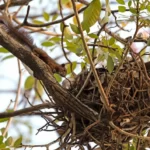Cedar trees are captivating additions to any garden, known for their graceful beauty and aromatic presence. As gardening enthusiasts, understanding the growth dynamics of cedar trees is crucial for cultivating a thriving green space. In this exploration, we delve into the fascinating realm of cedar tree growth, uncovering the factors that influence their development and the various types that contribute to the diverse tapestry of the gardening world.
Types of Cedar Trees
Within the gardening niche, several species of cedar trees stand out, each possessing unique characteristics. From the towering Eastern Red Cedar to the delicate Atlantic White Cedar, a variety of options allows gardeners to choose trees that suit their preferences and environmental conditions. Recognizing the distinct traits of these cedar species is fundamental for successful cultivation and a vibrant garden landscape.
Factors Influencing Growth
The growth of cedar trees is intricately tied to environmental factors that can either foster or hinder their development. Climate and soil conditions play a pivotal role, influencing the tree’s ability to establish roots and thrive. Additionally, ensuring the right balance of sunlight and water is essential for optimal growth. As we continue our exploration, we’ll unravel the specifics of these factors and their impact on the overall health and growth rate of cedar trees.
Average Growth Rate
Understanding the average growth rate of cedar trees provides valuable insights for gardeners aiming to plan and nurture their green spaces effectively. While growth rates can vary among different cedar species, a general understanding helps set realistic expectations. Cedar trees typically exhibit a moderate growth rate, with some species achieving a yearly expansion of a few inches to a foot. Exploring these averages enables gardeners to appreciate the gradual yet steady development of these majestic trees.
Tips for Faster Growth
For those eager to accelerate the growth of cedar trees in their garden, strategic care practices can make a significant difference. Soil preparation and fertilization play key roles, ensuring that the tree receives essential nutrients for robust growth. Pruning, when done judiciously, can stimulate growth by directing energy to specific branches. Adequate watering, coupled with proper sunlight exposure, also contributes to fostering a conducive environment for faster cedar tree growth. In the upcoming section, we’ll delve deeper into these tips, offering practical insights for cultivating thriving cedar trees in your garden.
- Not Available for Sell in WA, USA
- 1.5 Kg: Specially formulated for use on Cedar trees.
- Promotes long-term vitality through robust root development.
- Slow-release Nitrogen that continues feeding throughout the growing season.
- Treats one large tree or 2-3 smaller or newly planted trees. Includes complete instructions.
Realistic Expectations
While the allure of a rapidly growing cedar tree is enticing, it’s essential for gardeners to cultivate realistic expectations. Cedar trees, known for their resilience, often exhibit a steady but moderate growth pace. Patience becomes a virtue in gardening, as these trees take time to establish strong roots and flourish. Recognizing the natural rhythm of cedar tree growth allows gardeners to appreciate the gradual transformation of their green spaces and fosters a more sustainable and rewarding gardening experience.
Conclusion
In the verdant world of gardening, cedar trees stand as timeless companions, adding beauty and character to landscapes. Our exploration has unveiled the diverse types of cedar trees, the factors influencing their growth, and practical tips for nurturing faster development. As you embark on your gardening journey, remember the importance of understanding growth rates, implementing thoughtful care practices, and maintaining realistic expectations. May your garden thrive with the enduring beauty of cedar trees, creating a harmonious haven for both nature and admirers alike.





